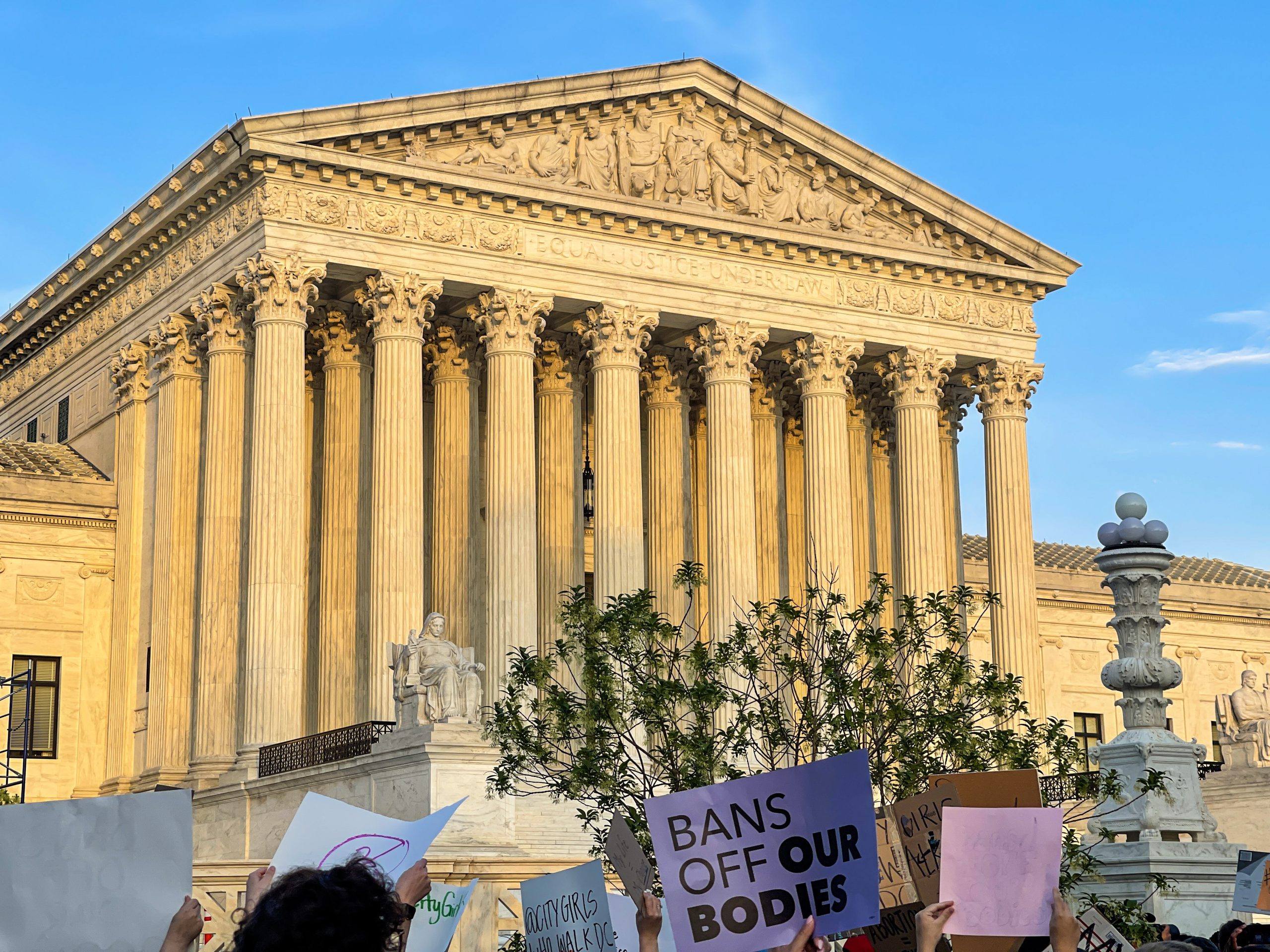Indianz.Com > News > U.S. Supreme Court decision in Dobbs v. Jackson Women’s Health Organization

U.S. Supreme Court decision in Dobbs v. Jackson Women’s Health Organization
Friday, June 24, 2022
Indianz.Com
The U.S. Supreme Court has reversed decades of precedent, with a new conservative majority denying women the constitutional right to an abortion.
The majority opinion was written by Justice Samuel Alito. Four of the court’s conservative members joined the decision in which the precedents of Roe v. Wade and Planned Parenthood of Southeastern Pa. v. Casey were explicitly overturned. In the prior cases, the Supreme Court had confirmed the constitutional right to an abortion.
“We hold that Roe and Casey must be overruled,” Alito wrote in the decision. “The Constitution makes no reference to abortion, and no such right is implicitly protected by any constitutional provision, including the one on which the defenders of Roe and Casey now chiefly rely — the Due Process Clause of the Fourteenth Amendment.”
U.S. Supreme Court Decision – Dobbs v. Jackson Women’s Health Organization
Syllabus |
Opinion [Alito] |
Concurrence [Thomas] |
Concurrence [Kavanaugh] |
Concurrence [Roberts] |
Dissent [Breyer, Sotomayor and Kagan] |
Complete Document
Syllabus – Dobbs v. Jackson Women’s Health Organization
19-1392_6j37-syllabus
Opinion [Alito] – Dobbs v. Jackson Women’s Health Organization
19-1392_6j37-opinion
Concurrence [Roberts] – Dobbs v. Jackson Women’s Health Organization
19-1392_6j37-roberts
Concurrence [Thomas] – Dobbs v. Jackson Women’s Health Organization
19-1392_6j37-thomas
Concurrence [Kavanaugh] – Dobbs v. Jackson Women’s Health Organization
19-1392_6j37-kavanaugh
Dissent [Breyer, Sotomayor and Kagan] – Dobbs v. Jackson Women’s Health Organization
19-1392_6j37-breyer-sotomayor-kagan
Full Document – Dobbs v. Jackson Women’s Health Organization
19-1392_6j37
Search
Filed Under
Tags
More Headlines
Cronkite News: Gathering addresses ‘epidemic’ among Native people
VIDEO: Cody Desautel on tribes and federal forest management
AUDIO: Legislative Hearing on Discussion Draft of Forest Management Bill
Native America Calling: Remembering the 1974 Navajo border town murders
Native America Calling: Can the right approach close the Native immunization gap?
Cronkite News: Long COVID cases remain high in Arizona
Native America Calling: Eyes in the sky for development, public safety, and recreation
Native America Calling: Three new films offer diverse views of Native life
NAFOA: 5 Things You Need to Know this Week
Chuck Hoskin: Cherokee Nation works toward cure for arthritis
Native America Calling: Protecting young people from the down sides of social media
Cronkite News: Fake ‘shaman’ among candidates failing to make Congressional ballot
Native America Calling: New Native voices in poetry
Cronkite News: Tribes air concerns about border at hearing in nation’s capital
Native America Calling: Indiginerds descend on Oklahoma City
More Headlines
VIDEO: Cody Desautel on tribes and federal forest management
AUDIO: Legislative Hearing on Discussion Draft of Forest Management Bill
Native America Calling: Remembering the 1974 Navajo border town murders
Native America Calling: Can the right approach close the Native immunization gap?
Cronkite News: Long COVID cases remain high in Arizona
Native America Calling: Eyes in the sky for development, public safety, and recreation
Native America Calling: Three new films offer diverse views of Native life
NAFOA: 5 Things You Need to Know this Week
Chuck Hoskin: Cherokee Nation works toward cure for arthritis
Native America Calling: Protecting young people from the down sides of social media
Cronkite News: Fake ‘shaman’ among candidates failing to make Congressional ballot
Native America Calling: New Native voices in poetry
Cronkite News: Tribes air concerns about border at hearing in nation’s capital
Native America Calling: Indiginerds descend on Oklahoma City
More Headlines

